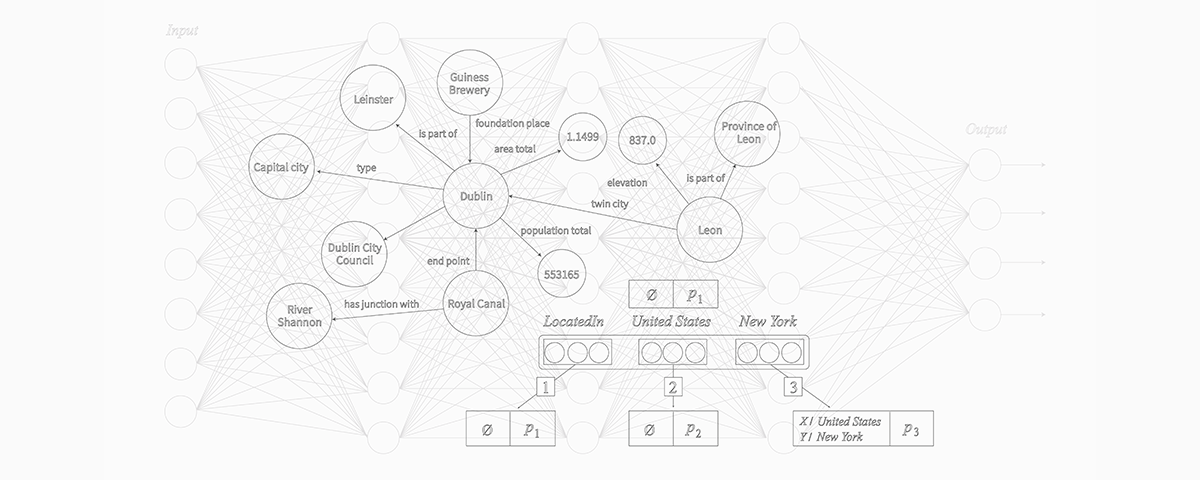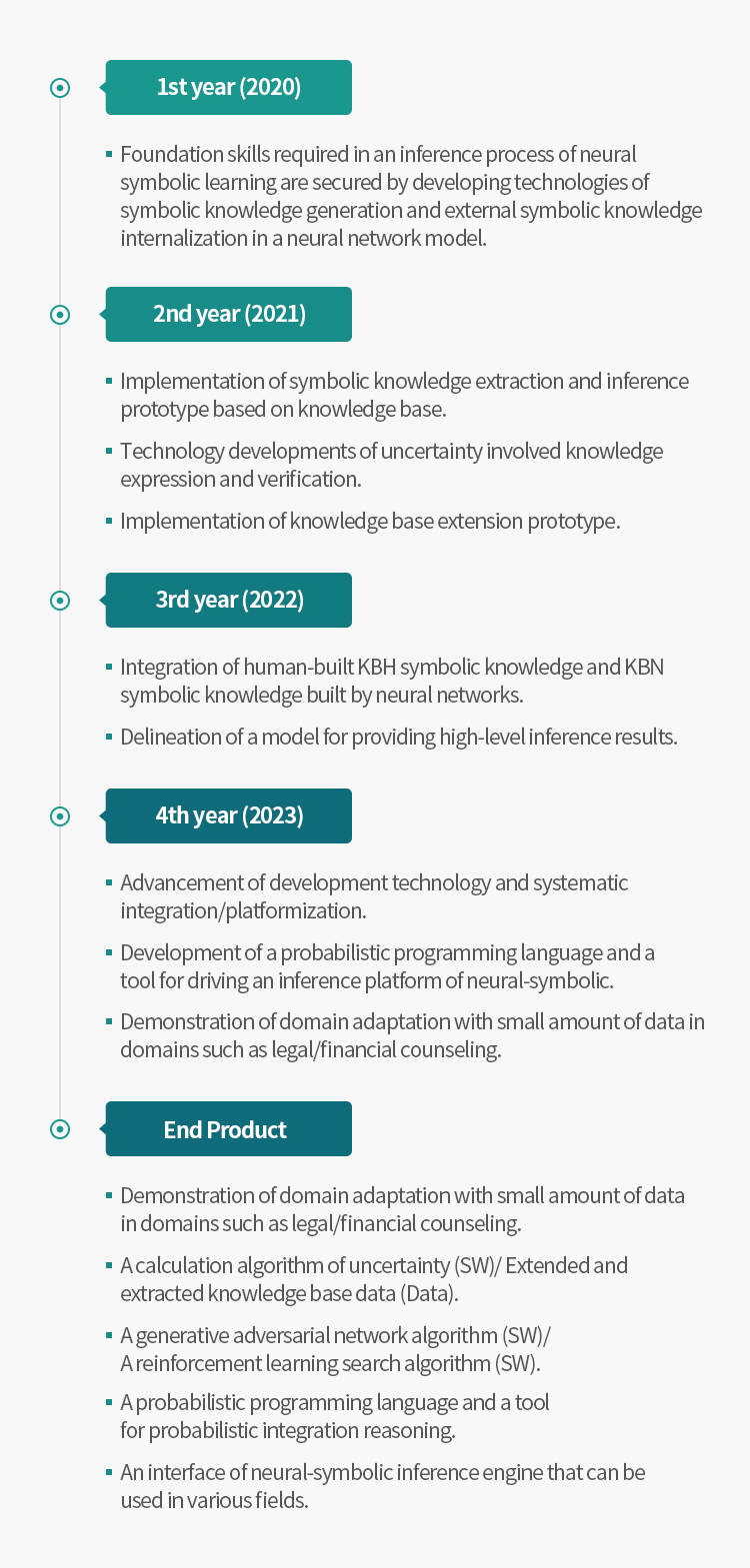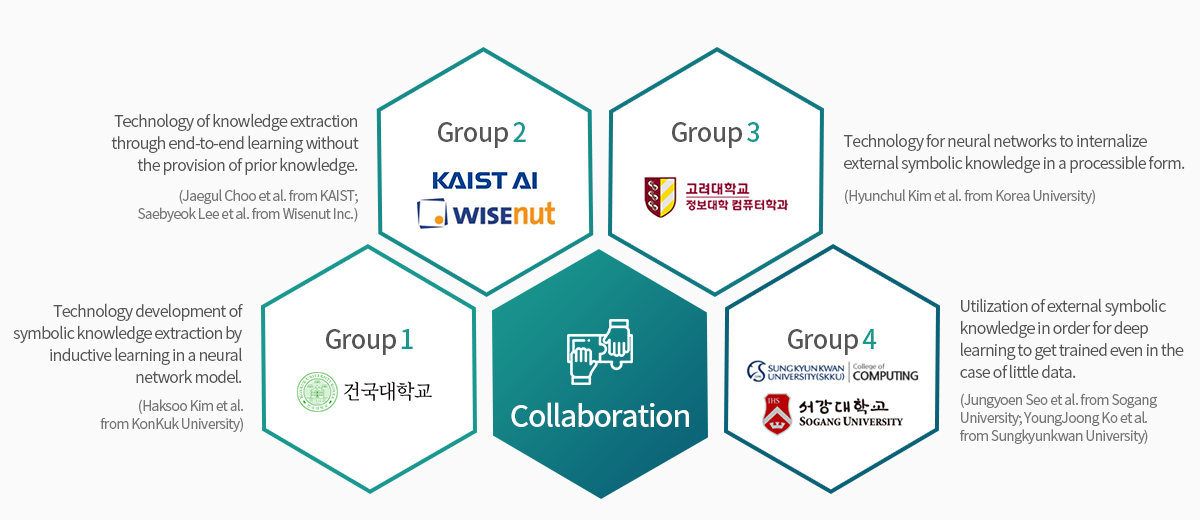Research
Research Introduction

Despite the diversification of machine learning, this R$D aims to develop next generation AI technology that can overcome the limitations of memory space, knowledge learning, reasoning processing, tacit knowledge analogy in the logical reasoning domain of deep neural networks. To this end, a neural-symbolic model research method is proposed. This neural-symbolic model research method extracts new symbolic knowledge from the neural network model and allows inferenced based on integration and expansion with the existing knowledge base.
-
01 Neural/Symbolic Combining the advantages of Neural/Symbolic models
A neural network model that makes inferences using external knowledge
Inference model learning through end-to-end differentiable training
-
02 Reasoning processing and explanatory power
Construction of end-to-end differentiable Theorem Prover for explainable deep learning models
-
03 Training sub-symbolic knowledge
Conversion of relational data structure into vector data using Graph Neural Networks
-
04 Neural network model using external memory
Improvement of domain transfer learning ability by using external knowledge
Reflection of the training results of neural networks to knowledge for long-term memory

Necessity
As domestic AI technology is recognized as a key driving force motivating the 4th industrial revolution, this is a moment to develop next generation AI technology in order to reduce the technological gap with leading countries representing AI technology, and to overcome fundamental limitations in the logical reasoning area of the current deep neural network, process reasoning, tacit knowledge inference and memory space, etc.
Goals and Contents


Developing a model that combines symbolic knowledge to compensate for the difficulty in learning a large amount of knowledge and reasoning since end-to-end learning is difficult in deep neural networks due to undifferentiating of symbolic knowledge.
Introduction of Research Institutes
The research promotes a successful business of neural-symbolic model by establishing a consortium with the professional company in AI field for empirical research and the foremost research institutes on university campuses where the fundamental technologies of natural language processing, machine learning, and visual intelligence are equipped in order to develop leading technologies.

General development of neural-symbolic platform applicable to various application servicesHee Seok Lim (General Manager) and 21 others from Korea University